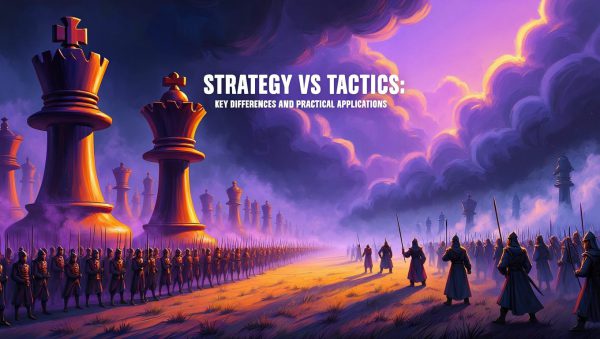
Dogs of the Dow 2023: To Prosper or Not?
Updated April 19, 2024
Rooted in the foundational principles of Charles Dow, the originator of the Dow Theory, the “Dogs of the Dow” strategy is a contrarian investment approach aimed at outperforming the Dow Jones Industrial Average. This strategy identifies the ten highest-yielding blue-chip stocks within the index, assuming they are momentarily undervalued due to their high dividend yields and set for a return to their true worth.
Charles Dow himself underscored the cyclic nature of stocks and market indices, advocating that a deep understanding of these patterns is essential for investment success. The Dogs of the Dow method capitalizes on this by focusing on stocks currently in a downturn, thus generally overlooked by most investors.
Echoing Solon’s belief that “Learning is not wisdom; the essence of wisdom is seeing what is valuable and holding fast to it,” this strategy emphasizes the critical importance of initial stock selection. Investors are prompted to embrace wisdom and courage, exploring territories others might avoid, thereby potentially enjoying more significant gains through capital growth and substantial dividend yields.
Nonetheless, it is crucial to recognize the shifts in modern market dynamics, which some market analysts believe have changed drastically since the era of Charles Dow. These analysts argue that today’s abundance of real-time data and sophisticated analytical tools have revolutionized investment strategies. The traditional annual selection based solely on dividend yields might not fully consider the swift changes in economic indicators or global events that could influence stock performance.
To effectively apply the Dogs of the Dow strategy today, investors must integrate the sagacity of historical perspectives with the realities of current market conditions. This involves a careful blend of analytical prowess—to identify which stocks are truly undervalued and not just temporarily distressed—and the insight to understand broader market sentiments.
As Machiavelli noted, “Whosoever desires constant success must change his conduct with the times.” This insight is particularly pertinent in modern investing, suggesting the necessity for ongoing adaptation and innovation in investment strategies. Thus, a successful investor must not only be contrarian in selecting stocks but also in thinking, ready to challenge established market norms and adapt strategies to meet the evolving financial landscape.
In conclusion, while the Dogs of the Dow strategy offers a structured route to potentially higher returns through disciplined investment in high-dividend-yielding stocks, achieving effectiveness in today’s markets demands a nuanced approach informed by historical insights and contemporary market analysis. This strategy requires a contrarian stance and a deep understanding of market fundamentals and the broader economic context. It echoes Templeton’s wisdom: “The four most dangerous words in investing are: ‘this time it’s different’.”
2023 Dogs of the Dow: Performance Overview
In 2023, the Dogs of the Dow strategy, deeply rooted in Charles Dow’s investment principles, focused on the ten highest-yielding blue-chip stocks within the Dow Jones Industrial Average. This strategy, designed to capitalize on what is perceived as undervalued stocks ready for a rebound, has shown unique resilience in a year marked by economic uncertainties.
Performance Highlights: The Dogs of the Dow ended the year with a modest overall gain. Despite a price change of -1.8%, combined with the dividend yield of approximately 4%, the total return for the Dogs was about 2%. This performance is particularly notable as it marked the first time since 2018 that the Dogs outperformed the broader Dow Jones Industrial Average, which they did by about seven percentage points.
Reflecting on the strategy through the lens of historical wisdom, Machiavelli might have appreciated the strategic patience required to stick with high-yield stocks despite market volatility, embodying his advice that “whosoever desires constant success must change his conduct with the times.” This adaptability is crucial in responding to the dynamic conditions of the stock market.
Cicero’s thoughts on the importance of a solid foundation resonate with the Dogs of the Dow strategy. He stated, “The roots of education are bitter, but the fruit is sweet.” Similarly, the initial bitter phase of investing in undervalued stocks can eventually lead to the sweet fruit of returns, as evidenced by the strategy’s performance in 2023.
Solon’s emphasis on wisdom and the value of enduring assets can be seen in the strategy’s focus on blue-chip stocks. These stocks are often considered foundational components of a diversified portfolio due to their historical stability and consistent dividend payouts.
Lastly, echoing the investment philosophy of Sir John Templeton, who famously noted, “The time of maximum pessimism is the best time to buy, and the time of maximum optimism is the best time to sell,” the Dogs of the Dow strategy capitalizes on this by investing in stocks that others are pessimistic about, aiming to reap benefits when market sentiment turns.
The 2023 performance of the Dogs of the Dow underscores the potential of this time-tested strategy to navigate through economic uncertainties and market fluctuations. By adhering to the principles of seasoned investors and integrating the wisdom of philosophical insights, this strategy continues to offer a compelling approach for those looking to invest in high-yield, blue-chip stocks.
Tactical Investor Dogs of the Dow 2023 Strategy On Display
Using our proprietary indicators, we identified an opportune time to purchase NKE between November 2017 and January 2018. The stock price fluctuated between $49 and approximately $60 during that period. Let’s assume we entered the position at $55.00. We then held onto the stock until July 2018 and closed the position when trading in the extremely overbought ranges. One could have exited the position in the $82-$85 range, realizing a gain of 50%.
While NKE continued to trend higher, we didn’t chase the stock. The idea is to buy when no one is paying attention, and the stock is trading in the extremely oversold ranges, and to close the position when trading in the extremely overbought ranges. This approach is a testament to our contrarian philosophy, which involves focusing on stocks that have great potential but are disliked by the masses. Our methodology is vastly superior regarding returns, as we put the concepts of Mass Psychology and Contrarian investing into play, ensuring that we are on the right side of the market.
Tactical Investor 2019 List of Dow Dogs
We will not provide the entire list as it is reserved for subscribers: it’s a bonus service we offer to market update subscribers. We are going to list four candidates.
The idea is simple: purchase shares in all four companies but assign the same dollar amount to each company. Hold them until the stocks are trading in the extremely overbought ranges, then repeat the process. We use proprietary indicators to determine overbought and oversold states. Still, several standard indicators should help the average investor determine if the stock is oversold or trading in the extremely overbought ranges.
Revisiting the Impact of the Dogs of the Dow Strategy
Small Dogs Pack a More Potent Punch?
Reflecting on the last 20 years, the traditional Dogs of the Dow and the broader Dow Jones Industrial Average have offered investors an annualized return of 10.8%. This interesting parallel between the two approaches suggests a consistent performance, regardless of the broader market’s volatility. To put these figures into perspective, an initial investment of $1,000 in the S&P 500 would have appreciated to $6,254 over this period, while the same amount invested in either the Dogs of the Dow or the entire Dow would have grown to $7,776. Remarkably, according to data from The College Investor, the Small Dogs of the Dow, which focuses on the five lowest-priced stocks among the ten high-yielders, would have transformed the same $1,000 into $10,734
As Plato once said, “Excellence is not a gift, but a skill that takes practice.” This principle holds in investing, where strategies like the Small Dogs of the Dow require careful selection and consistent evaluation to realize their full potential.
Small Dogs vs. Big Dogs
The “Dogs of the Dow” strategy involves a yearly selection of the ten highest-yielding stocks in the Dow Jones Industrial Average, while the “Small Dogs of the Dow” refines this approach by choosing the five lowest-priced among these ten stocks. Over the years, this subtler strategy has shown its merit. According to a study by Forbes, from 2003 to 2013, the Small Dogs outperformed the broader Dogs strategy in nine out of ten years and exceeded the performance of the Dow Jones Industrial Average in seven years.
The apparent advantage of the Small Dogs lies in their potential for growth. They focus on stocks that are high-yielding and undervalued, providing a dual benefit. This approach supports Erasmus’s idea that “The main hope of a nation lies in the proper education of its youth,” paralleling the idea that the foundation of a successful investment lies in the proper selection and nurturing of potential growth stocks.
Moreover, a New York Times analysis echoed these findings, showing that between 1988 and 2009, the Small Dogs strategy outperformed the traditional Dogs by an average of 3% annually. This suggests that a more focused investment in fewer stocks could yield greater returns, reflecting Montaigne’s belief in the value of depth over breadth: “Better to wear out than to rust out.”
Investment Strategy Considerations
While historical data support the effectiveness of the Dogs of the Dow strategies, especially the Small Dogs approach, it is crucial to acknowledge that past performance does not indicate future results. Investment strategies carry inherent risks, and the success of the Dog’s strategies may not necessarily continue under changing economic conditions or market dynamics.
Investors considering these strategies should evaluate their investment goals, risk tolerance, and time horizon. Consulting with a financial advisor could also provide tailored advice, helping align specific financial goals with appropriate investment strategies. This thorough approach ensures investment decisions are based on historical success and adapted to personal financial landscapes and future market expectations.
Intriguing Reads Worth Your Attention














